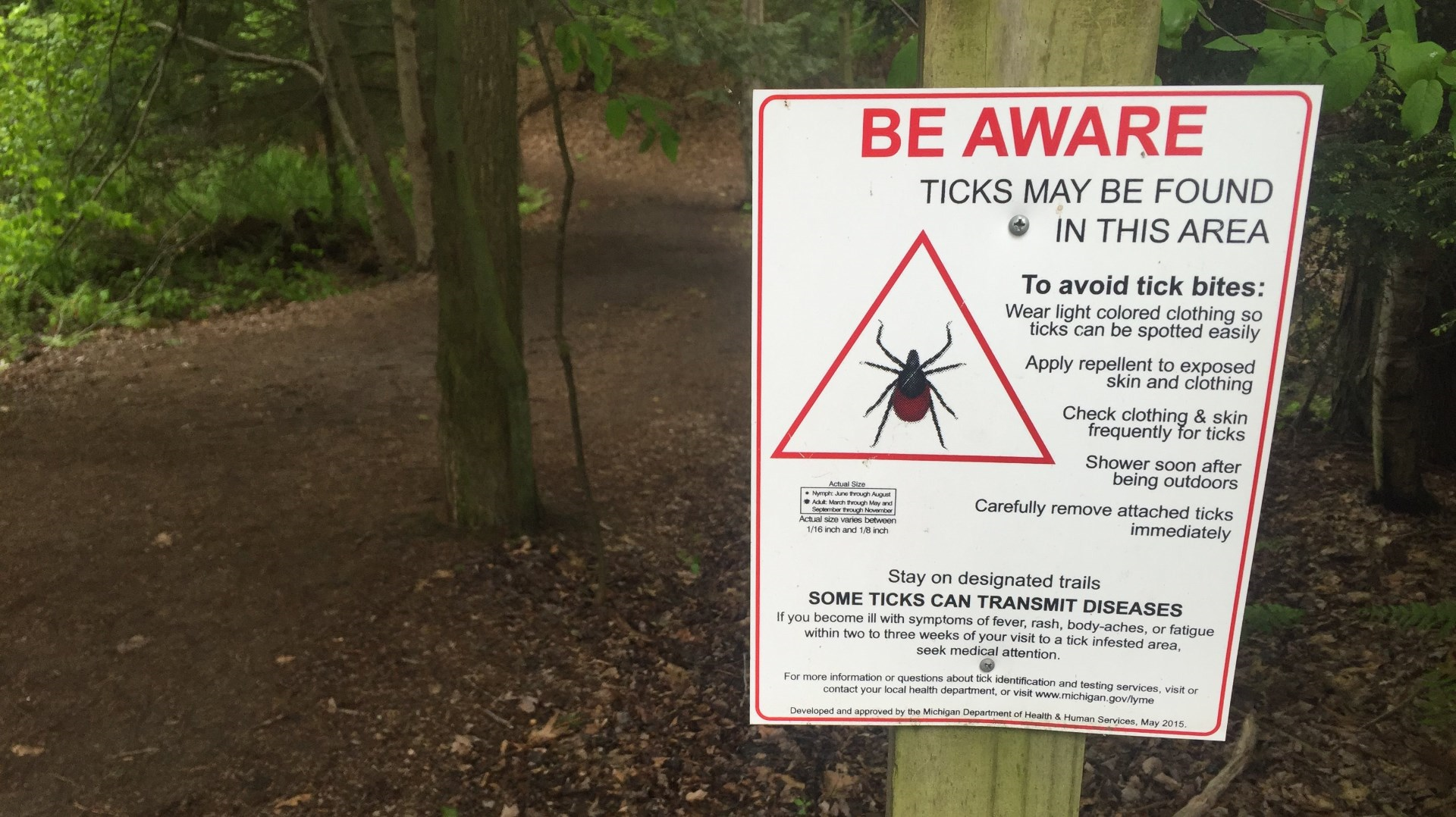GRAND HAVEN, Mich. (Grand Haven Tribune) The approach of warm weather is a welcome sign for Michigan residents, but a disease-carrying species is becoming active in that tall grass.
Ticks are a growing problem in Michigan, where Lyme disease carried by the parasites is also on the rise. Ottawa County saw nine cases of Lyme disease in 2018 and 13 in 2017, according to the state public health department’s communicable disease report released Thursday.
Statewide, there were 342 cases of Lyme disease reported in 2017, but health officials say cases may go unreported if ticks are not discovered.
According to the Centers for Disease Control and Prevention, symptoms of Lyme disease include fever, headache, fatigue and skin rash. If left untreated, the infection spreads to the joints, heart and nervous system. It can be treated within the first few weeks of detection with antibiotics.
Howard Russell, an entomologist at Michigan State University, said May and June are peak months for the American dog tick, but the species can become active any time the weather warms up. Adult black-legged ticks, or deer ticks, can become active in winter when the temperature gets above 50 degrees.
“Deer tick nymphs are active during the summer months,” Russell said. “It’s the nymph stage that is most likely to transmit Lyme disease.”
Both species are on the rise in Michigan, Russell said, and it is unknown for certain what is causing their spread. Nothing can be done to limit the species’ growth in the region, he added.
Other species of ticks live in Michigan, including lone star, woodchuck and brown dog ticks.
To find out if you are at risk of a tick-borne illness, you can send the tick to the Michigan Department of Health and Human Services for identification and testing.
You can also request a tick submission kit from the local health department. If the tick is alive, you can place it in a small container with a few pieces of fresh grass or a small paper towel moistened with a drop of water, and then fill out an MDHHS form to send it in.
Tips for prevention and removal
Ottawa County Parks & Recreation officials advise hikers to stay on trails, as ticks are more likely to dwell in tall vegetation or leaf litter. For areas with fewer designated trails, wear pants, socks and closed-toed shoes.
Tick checks should be done before getting in the car and again when you get home. For children, check around the hairline, and look inside the ears when checking pets.
Insect repellent with DEET is most effective for ticks. Officials also advise keeping a lint roller in your car to remove crawling ticks, and to toss hiking clothes in the dryer on high heat after your hike.
If you find a tick with its mouth buried under your skin, health officials suggest using fine-tipped tweezers to grasp the insect as close to the skin’s surface as possible. Pull upward with steady and even pressure.
If you twist or jerk the tweezers, you can cause the tick’s mouth parts to break off and remain under the skin, in which case you can remove the mouth parts with tweezers. If you can't remove the remains of the parasite, leave it alone and let the skin heal.
Officials recommend cleaning the bite area with rubbing alcohol, iodine scrub or soap.
►Make it easy to keep up to date with more stories like this. Download the 13 ON YOUR SIDE app now.
Have a news tip? Email news@13onyourside.com, visit our Facebook page or Twitter.


